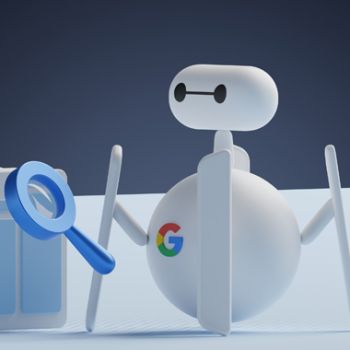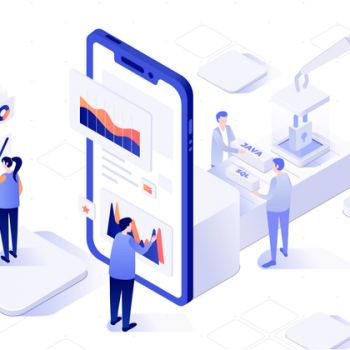Do you know what your customers really want? We’re not talking about your services or products, but the experience and emotions they get from dealing with your business. And do you know how they feel when interacting with your competitors? Is there a difference, and if so, what is it?
In this article we’re going to go deep into your customer’s psyche and put their shoes on for 15-minutes. Because when it comes to marketing, you should always be wearing your customer’s shoes – seeing things from their perspective.
You’re going on their journey!
A customer journey is a map detailing the full progression of your customers: from their initial awareness of your brand, their initial interactions with your loyalty and remarketing campaigns that you use.
Your customer journey is the total sum of experiences your customers go through. Instead of looking at a small piece of their journey, i.e. your initial sales call, your customer journey documents their full experience and interactions with your business.
Okay, that should cover what a custom journey is, what next?
The good news is that a customer journey isn’t too tricky once you get started. And the results of understanding your customer journey can be remarkable – we’re talking happier, more loyal customers that buy with less resistance and are glad to spend more.
How do your customers currently feel?
As consumers of any kind of product or service, we humans are looking for a “pleasant, satisfying feeling” when we make a purchase. Most people get a high from purchasing something they’ve been thinking long and hard about. For business or pleasure, that’s how trading and commerce has been since the existence of people.
Because of this, any little holdup or nuance is amplified significantly if a customer has a bad experience with your business. Hence why understanding your customer’s journey is so critical – if only to avoid negative online reviews.
A customer journey example
Imagine you really want a new pair of red Nike shoes, and after much research, you find a Brisbane supplier who can deliver quickly near you, for free.
You bookmark the website on your phone on the bus to work, and on your lunch break return to the website from your laptop to buy the shoes. But the website takes forever to load, then it looks different to the mobile website version, and you can’t find the shoes. When you do, you press order and can’t find the checkout button.
Yikes….after all of this, you better hope the shoes are in stock. But as you can imagine, you’ve likely already lost sales with that kind of customer experience. Most people find it easier to click back to Google and find a competitor – than go through a tedious process (poor customer journey).
You can see how much even the initial journey your customer’s experience matters. And we’ve just started: Let’s say you buy from the low-quality website, how long do they take to ship? Do you need to be home to collect them? Can you return the shoes? What if there’s a problem, can you call someone and get quickly through?
What happens when you provide a remarkable experience?
No doubt we’ve covered what happens when you provide a ‘sub-par’ customer experience, but what if you provide a remarkably customer journey?
Imagine you purchased those red Nike shoes, got them in 2 days and they fit perfectly, brilliant! You pull out your phone, snap a pic and post it on Facebook or Instagram, or like the good old days, you simply tell your friends and family that they should save their money and buy online from your supplier.
The power of an amazing customer experience is amplified.
How to map your customer’s journey
Now it’s time to get into it – with a good old pen and piece of A4 paper. We’re going to draw a timeline with every stage of your customer’s journey, ‘the touch-points’ your customer’s have with you.
1. On the left-hand side of your piece of paper, draw a dot. This is the very first time a customer will see your brand. Call it “first contact”. This could be a number of touch-points like your website’s SEO results in Google, social media, PPC advertising like AdWords – or even a print campaign.
2. Moving from left to right, draw another dot and put the second customer touch-point. If the first point was social media or AdWords, the second might be your website. Make the best guess you can, and name this touch-point.
3. Moving further to the right, add your next touch-point. This might be an email, a survey, a phone call or even an in-store visit. Again make your best guess if you’re not 100% sure.
NOTE: If you have an e-commerce store, you will need to map every stage of the buying process. Do not skimp on the details here, and make sure you go through the checkout process as a customer would!
4. Continue the dots above until after your customer has bought from you, and you are marking customer loyalty touch points, like email marketing campaigns.
NOTE: If you are planning to improve your customer journey, then map out all of the touch-points ‘you want’, not just those that you have. But use a different colour or shape for your new or desired touch-points.
5. After you’ve finished adding in all of your customer’s touch-points, now comes the big one, mapping your customer’s emotions and motivations.
Mapping your customer’s emotions and motivations
To map this, above your first touch-point, draw another dot point. On top of these dots we’re going to draw an emotion with a simple “happy, neutral or sad face” (like the smiley faces on your mobile phone). Along with this face, we’re going to write a few lines that cover a customer’s motivations. Do this for all of your touch-points – for each stage of your customer’s journey.
Finding your customer journey strengths and weaknesses
With your customer journey map now in place, you should be able to quickly identify where your customers are not unhappy, and where they get hung-up. This can include a lot of stages, so be sure to map all of them.
What kinds of obstacles are your customers confronted with? Are your costs a factor? What about your return policy? Think about everything that could cause a customer to go to one of your competitors, and start working on real solutions to make your customer journey all smiley faces: )
In summary
Naturally every customer journey will be a little different, so aim for the majority of your customers – or the majority of your revenue generating customers.
If you’re still not sure, try asking one of your customers to work with you. Your customers can be one of the most powerful tools you have to improve your customer journey and grow your business, so don’t be afraid to ask them, but just offer something in reward (like a free pair of red shoes).
Found some weaknesses in your digital customer journey?
At KMO we work with clients from all kinds of industries to improve their customer journeys and increase sales. We’d love to chat with you if you feel you could be improving your experience.








